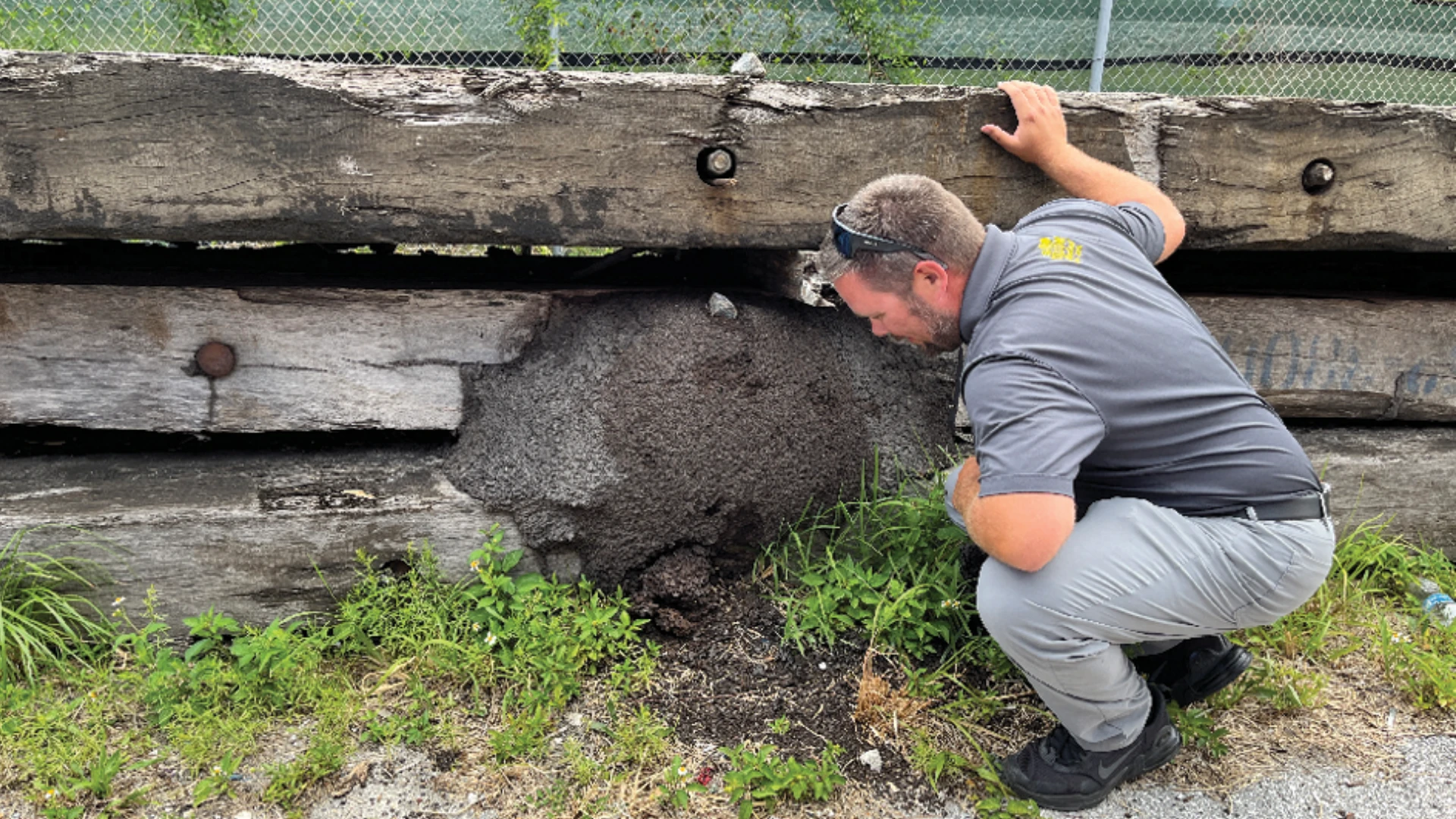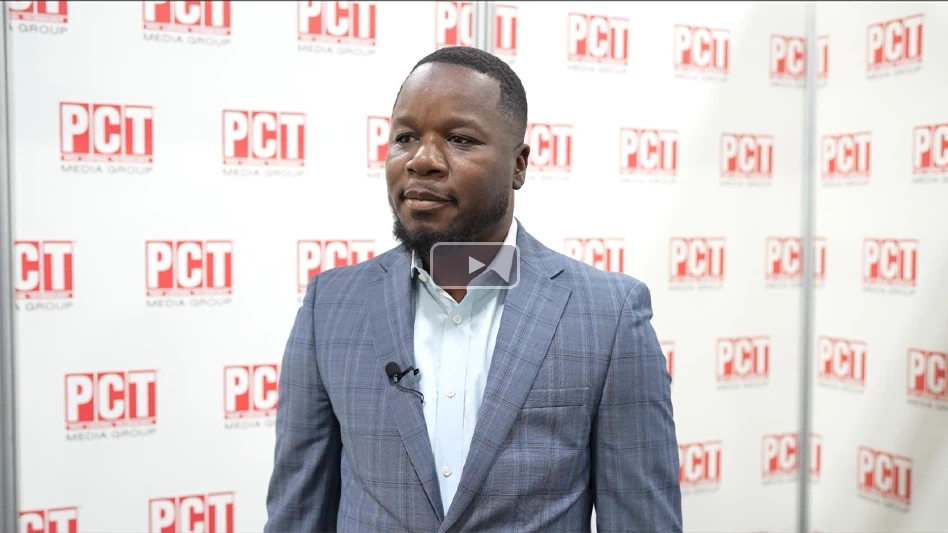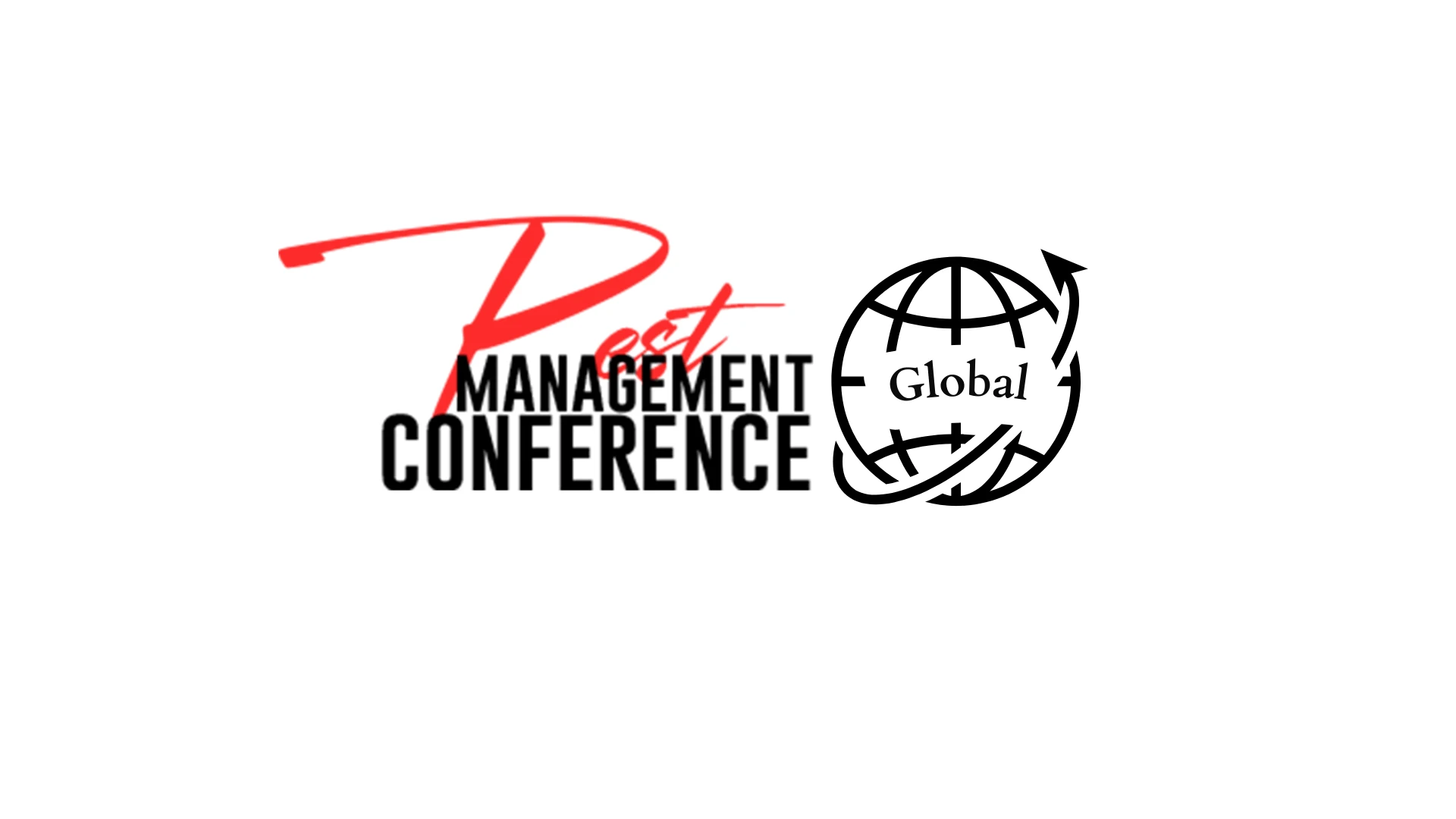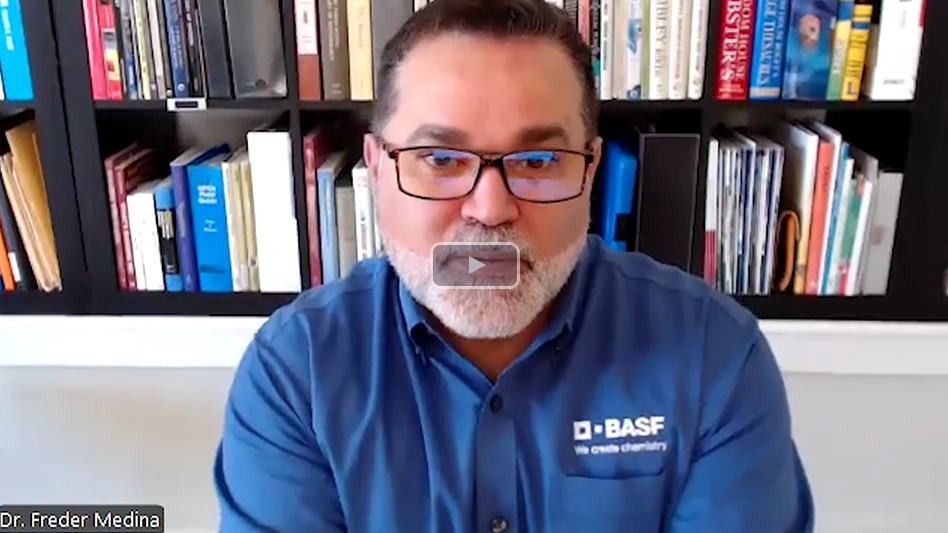In a year that brought worries about terrorism, a lagging economy, increased regulations and pricing pressures, business owners in the pest control industry remained optimistic throughout the 2002 season. They also found a number of reasons to remain hopeful about the industry’s prospects for the future.
These and other findings were highlighted in PCT’s recent survey of more than 300 pest control professionals. The survey, conducted this spring and summer, asked respondents about everything from their company’s history and make-up to services offered and annual sales. The results, discussed on the following pages, paint a picture of an industry that is grappling with change but coming out ahead.
COMPANY MAKE-UP. Not surprisingly, the 2002 survey indicated that the great majority of PCOs, about 91 percent, are independent operations, with 3 percent being chains and 2 percent being franchises. The number of independent operations in the industry has appeared to increase: In the previous survey, conducted in 2001, about 78 percent of PCOs said they were independent operations. Related to this trend, a larger number of pest management professionals also work out of one office location: 82 percent compared to 65 percent last year.
The increase in independent operations may be due in part to the ongoing consolidation that is occurring in the structural pest control industry, as well as the downturn in the economy. "Whenever the economy slows, you see an increase in the number of people entering the pest control industry because the barriers to entry are less significant in pest control than many other service industries," says Dan Moreland, publisher of PCT magazine. "It’s a natural by-product of a slowing economy."
In addition, when mid-sized companies are purchased by large regional or national firms, employees from the smaller companies oftentimes launch their own businesses, adding to the influx of new start-ups resulting from the mergers and acquisitions process.
The number of new start-ups continues to occur at a high pace, survey figures show. About 72 percent of the companies surveyed were founded since 1970, with one-fifth being founded since 1995.
Established PCOs say they have noticed an increase in start-ups for several years now. "Certainly as the market grows larger, which it has in the northern Virginia area, that brings more start-ups," says Jack Broome, president of PermaTreat Inc., based in Fredericksburg, Va. "Usually you see their vehicles around town or an employee comes in and lets you know about them."
Warren T. Remmey Jr., owner of Spider Man Pest Control, based in San Antonio, Texas, says there have been many new start-up companies in his area, most of which are one-man operations. "We see many every year around springtime," he adds. "Some of the fortunate ones do survive but it’s very difficult to grow a business and do it by the book the way the regulations people mandate it be done." Remmey explained that managing such things as notifications can be especially difficult for new start-ups or one-man operations. "Some of them are doing a fine job," he notes, "others are just going to fall by the wayside as they do year after year."
COMPANY SERVICES. Most pest management professionals offer control services for ants, rodents, fleas, perimeter pests and termites. In fact, the percentage of PCOs offering each of these services increased since last year’s survey. The most popular services in 2001 were ant and rodent control, being offered by 96 and 95 percent of PCOs, respectively (see chart at left).
Ant and termite control remained the industry’s biggest growth markets, with one-third (33 percent) of pest management professionals selecting either ant or termite control as their single best growth area.
While the residential market has historically comprised the lion’s share of work for PCOs, the survey indicates it is even more so this year. On average, 72 percent of PCOs’ accounts are residential and 28 percent are commercial. This compares to averages of 64 percent and 36 percent in 2001, respectively.
PCOs interviewed by PCT say residential services offer more growth opportunities, and business has improved on the residential side for a number of reasons.
Brian Van Dam, president of Fulton Company Inc., based in North Miami Beach, Fla., says the healthy housing market in his area has been a factor in the company’s growth. He has actively marketed his company’s services to developers, community associations and existing homeowners to continue to gain new sales when homes are bought and sold. "When we have a seller notify us that they are moving, we send out a fairly comprehensive marketing package to the new resident and let them know how long we’ve been taking care of the home," he said. Such efforts have helped Fulton Company retain a large number of those homes, he said.
Larry Churchman, owner of Dial One Real Estate Pest Control based in Louisville, Ky., says the way homes are built today also has made the need for pest control much more important for owners in his service area, which is metropolitan Louisville. "The architecture and design of new homes and landscaping practices creates a lot of pest control work," he notes.
Also, in a recessionary period, those responsible for making decisions about pest control in a corporate setting may decide to cut back on their service frequency or eliminate the service altogether as part of a "belt-tightening" strategy. Residential customers, on the other, are not as quick to cancel their contracts, particularly when it comes to termite control. "Homeowners may cut other expenses, but they typically aren’t willing to take any chances with their #1 investment, their home," Moreland says.
TODAY’S ECONOMY. This pest season, business owners are grappling with a number of unusual economic concerns. While consumer prices stayed relatively flat, PCOs interviewed said they saw their costs rise in the last year, but at the same time, had a difficult time passing those increased costs on to customers. In fact, it appears prices being charged by the industry have actually declined slightly: According to the survey, this year, more PCOs are charging less than $50 for residential work, (from 29 percent last year, to 43 percent this year). Likewise, more companies are charging below $100 for commercial work (from 49 percent last year to 57 percent this year).
PCOs interviewed say they’ve experienced definite cost increases in fuel and insurance. Those increases hurt, especially in this fragile economy when it’s difficult to increase prices to help cover those increases. "Business costs have skyrocketed in the last 12 to 18 months," said Van Dam, who is also president of the Florida Pest Management Association. He referred to fuel costs that have risen by about 50 percent in his area, as well as increasing insurance costs. Van Dam also notes that there are fewer insurance companies willing to serve the pest control industry, which has contributed to its higher costs. "I know that auto insurance has gone up, and workers comp has gone up, and if you’re in the fumigation side of our industry, the premiums have gotten astronomical — that’s if you can find a company that will write it," he adds.
One cost that apparently hasn’t increased substantially has been labor. Wages in the pest control industry have increased only modestly according to the survey. The average compensation for general pest control technicians has gone from $29,600, in the 2001 survey, to $30,372 this year.
Along with the modest increases, it appears that fewer pest management professionals have increased wages and benefits this year than last year. About 28 percent said they increased wages or benefits in the past 12 months, compared with almost half who did so last year. The amount of the increase was also lower: 8.5 percent compared with 11 percent last year. Such numbers are reflective of a labor market that has begun to soften in response to a slowing economy and rising unemployment, increasing the pool of job candidates qualified to perform pest control work.
One component, however, of increased labor costs has something to do with the way pest control is done, notes Churchman, who is also president of the Kentucky Pest Control Association. "It’s very difficult for the average PCO to pay the wages he needs to, to get the type of person he wants to get, because it’s hard to get the prices for the work." Adding to this complexity, he says, is that the greater demand for IPM services means labor costs will increase, but many PCOs still don’t know how those services should be priced. And at the same time, some consumers still don’t understand why IPM should cost more. "I think the industry is at a crossroads a bit," Churchman said. "We don’t know whether we want to be in the chemical application business or the IPM business, and it’s kind of hard to do both." Churchman says in his service area, there’s still no consensus on what the market will pay for an IPM program.
For the most part, however, it appears that customers are very happy with their pest control company, the survey indicated: Close to three-fourths of PCOs (73 percent) reported that their customer cancellation rate was less than 5 percent.
About 70 percent of PCOs said they expected sales performance in 2002 to increase over 2001. A similar percentage of PCOs expected sales to increase last year. Those who said sales would increase felt they would jump by an average of about 14 percent, compared to 18 percent expected in 2001. The survey also indicated some changes in the amount of company sales levels throughout the industry. More firms earn revenues between $100,000 and $249,000, up to 28 percent from about 19 percent last year. But fewer firms grossed above $1 million, to about 16 percent from 20 percent last year.
THE ROLE OF TECHNOLOGY. Just more than one-third of PCOs (36 percent) now have a Web site. Many PCOs, even those who don’t yet have Web sites, view them as useful business tools. Nick Fowler, vice president of Applied Pest Management, based in Vallejo, Calif., has had his company’s Web site up and running for about a year now and says he’s had more than 1,500 hits so far. Visitors to the site can request an appointment. "I think it is an important business tool because in today’s fast pace, you don’t always have time to read literature during the day," Fowler says. "If you want to browse, it’s nice to do that at home at your leisure."
Van Dam, who doesn’t currently have a Web site for his business, plans to develop one within the next year. He says it’s a vital business tool and notes that these days, people consult the Internet more so than consulting with family and friends when making purchasing decisions. "It’s a vital tool for consumers to be able to make choices for their purchases," he said.
Meanwhile, competition in the marketplace, always a factor, has likely played a role in keeping pest control prices low, and perhaps in limiting the amount of new growth that PCOs can achieve. Van Dam notes that in the extremely competitive Florida market, for instance, it’s difficult for companies to achieve growth. "I don’t know of many companies that are enjoying rapid growth right now except through acquisitions," he says. He made the business decision four years ago to sell the company’s structural pest control and termite business, and now offers only exterior pest control and lawn and ornamental services.
"We decided to focus on where we would be able to provide quality service and enjoy rapid growth," Van Dam said, explaining that the pest control and termite segments of the industry had become so competitive in South Florida that it was very difficult to grow through advertising and marketing. "The only way you could really grow was through acquisition because the market was so heavily flooded with competing companies," he said.
Van Dam says in his area, some companies are satisfied if they have minimal growth. "It seems like it’s difficult to get the net growth you’re looking for. You wind up just trading accounts — getting new ones to replace the old ones."
FUTURE CONCERNS. More than half of PCOs surveyed (53 percent) said government regulations represent the most serious threat to the future of the pest control industry. Some PCOs cited the loss of beneficial products, prompted by increased EPA scrutiny and high reregistration costs; and increased notification requirements, as examples. Fowler says government regulations are one of the industry’s biggest problems. "They take pesticides away from us, and there’s not a lot of rationale behind it," he said. "It’s my personal opinion that if the government wants to regulate pesticides, they should take them away from the homeowners."
Some PCOs contend however that regulations are just a part of doing business in this industry. "I think that in moderation, the regulations aren’t a threat to our industry," said Broome. Van Dam agrees. While they can have negative effects, he notes, "you’re certainly not going to have business without regulation."
Two other issues identified as threats to the industry were a lack of labor (selected by 18 percent of PCOs) and the economy (named by 15 percent of PCOs). Some PCOs concerned about the labor force said although the market for available labor has loosened in the past year, there seems to have been a decline in the work ethic of today’s new recruits. "Finding suitable labor has been tremendously hard," said Remmey. "The work attitudes of the youngsters of today are so radically different from what we are accustomed to."
Churchman says in Kentucky, recently adopted regulations require that all pest control technicians be certified by the state. "There’s going to be a scramble to find certified people," he said. However he notes the new rule won’t affect his company, since all of his technicians are already certified. But he admits finding employees is difficult because of the many important qualities needed in an employee. "We’re in a lot tougher situation than some industries," he says. Employees have to be self-motivated, honest, intelligent and have people skills, he notes. "When you put in all the variables that you need, you’ve reduced your pool," Churchman says. "It takes a specialized individual to have all those qualities." What’s more, he notes, some companies in the industry can’t afford to pay the wages that such skilled individuals deserve and could find elsewhere.
Fowler agrees. "Labor has always been the hardest part of the industry. Your technicians work out there independently. There has to be a lot of trust and faith put into those technicians." But he says the labor pool has increased recently, due to the nation’s economic woes which have led to corporate layoffs.
But while PCOs do have concerns over labor issues, it appears they’re retaining more employees than in previous years: 59 percent of PCOs reported a level of zero annual employee turnover for pest control technicians, compared to about 48 percent in 2001.
Economic concerns, while a factor in PCOs’ successes from year to year, generally have only temporary effects, PCOs say. Many PCOs feel pest control is somewhat recession-proof. "The economy goes up and down," notes Churchman. "As long as it’s not an absolute depression, there’s still going to be people who have need of our services."
The lagging economy may have even helped the industry’s labor situation, since increased layoffs have translated into a larger labor pool from which to draw, and more people are looking to the pest control industry for opportunities.
Broome agrees. "I have found that business actually picks up through these things," he said, "reason being that people will more often look after what they own than go out and buy new. The pest control industry really thrives when these things come along...unemployment rates go up which makes it easier for us to find labor."
One area that continues to anger most PCOs is the media’s portrayal of the pest control industry. About 59 percent of PCOs said they were disturbed or angered by the way pest management professionals are portrayed in the media. Asked whether the media’s treatment of PCOs has improved, deteriorated or remained the same, about half (47 percent) said they saw no change, while close to one-third (34 percent) said it has improved and 17 percent said it has deteriorated.
Van Dam notes that the media tends to sensationalize news stories involving the industry. "They’re very quick to jump on a story and place blame without doing true fact-finding and having a good understanding of the industry," he said. He referred to a recent article in SmartMoney magazine titled, "Ten Things Your Exterminator Won’t Tell You," that criticized such things as the industry’s treatment techniques, warranties, and employees, among other things. (See page 17.)
A PROMISING OUTLOOK. Amid all of the complex economic, political, and regulatory considerations of the past year, PCOs remain upbeat about the future: almost three-fourths (74 percent) of those surveyed said they were optimistic about the future. Only about 7 percent were pessimistic, with the remaining 19 percent neither pessimistic nor optimistic. Why are PCOs so optimistic? As PermaTreat’s Broome says, pest control is an honorable profession with a lot of promise. "I’ve been in this industry for years," he said. "I think the industry has worked hard to upgrade its image and I think it’s beginning to show, and I think as we go through the years it will continue to improve." n
The author is former managing editor of PCT magazine. She can be reached at lmckenna@pctonline.com.

Explore the October 2002 Issue
Check out more from this issue and find your next story to read.
Latest from Pest Control Technology
- The Evolving World of Electronic Rodent Monitoring
- Back-to-basics Approach for Cockroach Control
- PPMA Encourages PMPs to Take Part in Termite Awareness Week
- Moneypenny is a Provider of Virtual Receptionists
- Video: Top 10 PCT Photo Contest Finalists
- Massey Services Expands with Southeast Commercial Region
- Pest Management Foundation Announces Kevin J. Burns Scholarship
- How to Identify Clover Mites





